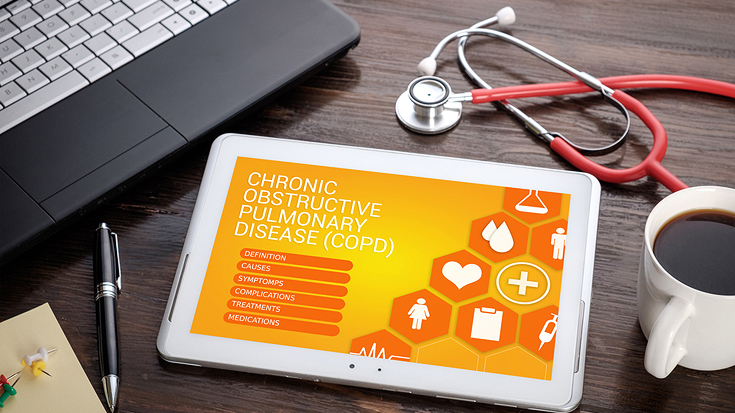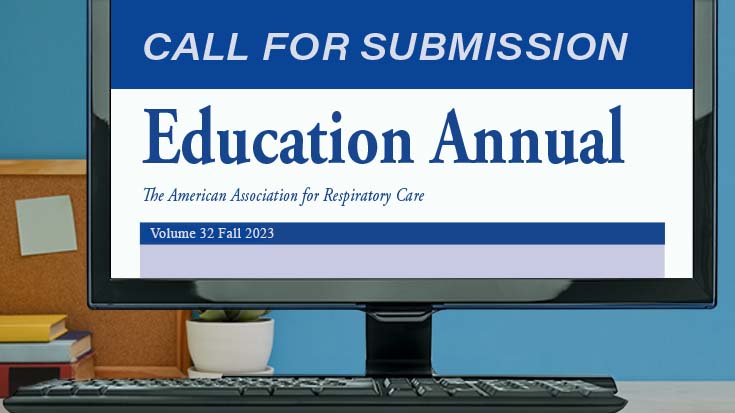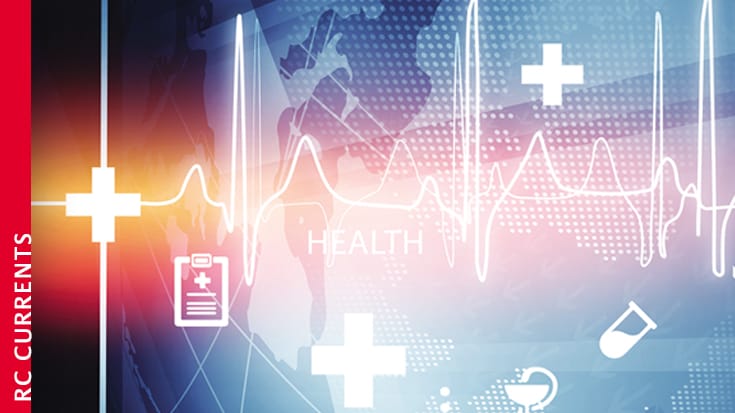
For over two decades, the Global Strategy for Prevention, Diagnosis, and Management of COPD has been an indispensable reference for anyone involved in the management of chronic obstructive pulmonary disease (COPD). From diagnosis to advanced therapies, the GOLD report provides evidence-based recommendations for guiding people through this complex disease. The report is frequently revised (with major updates coming in 2007, 2011, and 2017), and annual updates provide insight into the latest research innovations. Despite being classified as a “minor” update, the 2022 iteration of the GOLD report contains some 160 new references, demonstrating the pace of research in respiratory medicine.1 Tucked into those references are several important updates and some indicators of where research may go next.
Is Everything Old New Again?
One of the new report’s most intriguing ideas is that some COPD cases’ origins may actually stretch back to childhood. This idea calls back to the so-called “Dutch Hypothesis” of the 1960s, which suggested that asthma, chronic bronchitis, emphysema, and other obstructive processes were all part of the same syndrome, known as chronic nonspecific lung disease (CNSLD).2 Purportedly, these lung problems had some common genetic basis with differentiation brought on by exposure to various environmental factors. The new GOLD report highlights that any lung insult, even one during gestation, has the potential to reduce an individual’s peak FEV1. That loss can alter the trajectory of lung function throughout life, leading to chronic obstruction in adulthood.
This hypothesis has led GOLD to propose formal definitions for four new distinct phases of COPD. No longer are “mild” COPD and “early” COPD essentially interchangeable; instead, early now should only refer to biological age at onset, and the mild term should only be used during clinical evaluation. In addition, GOLD suggests COPD developing between the ages of 20 to 50 should be known as “COPD in young people.” Notably, this includes those who never achieved optimal airflow parameters, as well as those who are experiencing a premature decline. Finally, those with symptoms without significant obstruction or other obvious causes should be categorized as having “pre-COPD” due to the increased risk of eventually developing the condition.
GOLD hopes that by defining these potential phenotypes, additional research through epidemiological studies like COPDGene,3 SPIROMICS,4, and SOURCE5 can improve our ability to identify those most at risk for COPD and work to mitigate as many of their risk factors as possible.
The Impact of COVID-19
The 2022 report is the first produced since the advent of COVID-19 vaccines and, as you would imagine, the GOLD recommends most people with COPD receive whatever formulation is available to them. However, the pandemic’s impact goes far beyond adding a new shot to the list. Remote pulmonary rehabilitation evolved from an interesting idea with great potential to a must-have intervention almost overnight in 2020, and lessons learned from that switch are starting to be evaluated. Unfortunately, due to tremendous variation in how this “tele-rehab” has been delivered during the pandemic, there remains significant uncertainty surrounding virtually all aspects, from patient selection to best practices and outcomes. Nevertheless, it appears safe, and preliminary reports from the Cochrane Review suggest that under ideal circumstances, it may even be as effective as an in-person program.6 Given the many barriers to the uptake of pulmonary rehab, it seems clear in GOLD’s view that tele-rehab programs continue to be studied to understand who might obtain maximum benefit, as well as for whom the barriers may be different rather than reduced.
One of the more controversial mitigation strategies to reduce the spread of COVID-19 was the use of so-called “shielding” protocols. Debate may continue over what impact these practices had on the spread of the virus. However, there is evidence that adhering to at least some of these practices may have contributed to the significant reduction in COPD-related hospitalizations during the initial waves.7 Therefore, these may be beneficial to reducing exacerbation rates outside of public health emergencies. Accordingly, GOLD added masking and social distancing to their list of non-pharmacological practices that can reduce exacerbation frequency. Furthermore, hand hygiene continues to be re-emphasized. The addition of these practices includes the caveat that the more intensive shielding measures (like reducing social contact) may only be necessary during times when the risk of exacerbation is higher (such as the winter).
Bronchiectasis In the Spotlight
While technically not new studies, GOLD added two additional references covering bronchiectasis to this year’s report. First, perhaps in recognition of the inaugural World Bronchiectasis Day on July 1, the chapter on comorbid conditions highlights our increasing understanding of the burden of bronchiectasis. A significant number of people with COPD have concurrent bronchiectasis, but historically this cohort has gone undiagnosed. GOLD reports that thanks to the growing use of CT scans in the routine management of lung conditions, we now know that as many as 69% of COPD cases have some degree of overlaid bronchiectasis. Bronchiectasis can often explain frequent exacerbations, chronic infection symptoms, and other issues that may require more aggressive therapy. Accurate diagnosis can also open the door to therapies that insurance may not cover, such as high-frequency chest wall oscillation (HFCWO).
The Little Things
Not every addition needs a headline-level impact. Yet, an annual update allows the most current epidemiological data to be disseminated regularly, including prevalence, cost burden, and demographic differences. This update process, in turn, allows the advocacy community to more effectively speak to policymakers and develop public health interventions that may help reduce the impact of COPD over the long term. New information about nutritional interventions and exercise modalities helps us understand what may work well (or not at all) for our patients, allowing for more individualized therapy plans. These updates can improve our knowledge of current therapies; for example, the report clarifies that patients with alpha-1 antitrypsin deficiency, an FEV1 of 35-60% predicted, and any history of smoking may be the ones who benefit the most from augmentation therapy. Information like that allows us to provide better therapy recommendations to patients, families, and fellow clinicians.
The annual GOLD report continues to provide one-stop shopping for the best-available research on COPD. From prevention strategies to screening and diagnosis to treatment options, this resource is an essential guide for anyone involved in COPD care.
- 2022 GOLD Reports – Global Initiative for Chronic Obstructive Lung Disease – GOLD. Accessed July 24, 2022. https://goldcopd.org/2022-gold-reports-2/
- Sluiter HJ, Koeter GH, de Monchy JGR, Postma DS, de Vries K, Orie NGM. The Dutch Hypothesis (Chronic Non-Specific Lung Disease) Revisited. Vol 4.; 1991.
- Han MK, Muellerova H, Curran-Everett D, et al. GOLD 2011 disease severity classification in COPDGene: a prospective cohort study. The Lancet Respiratory Medicine. 2013;1(1):43-50. doi:10.1016/S2213-2600(12)70044-9
- Han MLK, Quibrera PM, Carretta EE, et al. Frequency of exacerbations in patients with chronic obstructive pulmonary disease: an analysis of the SPIROMICS cohort. The Lancet Respiratory Medicine. 2017;5(8):619-626. doi:10.1016/S2213-2600(17)30207-2
- Home | SOURCE. Accessed July 24, 2022. https://sourcestudy.net/source/
- Cox NS, Dal Corso S, Hansen H, et al. Telerehabilitation for chronic respiratory disease. Cochrane Database of Systematic Reviews. 2021;2021(1). doi: 10.1002/14651858.CD013040.PUB2/MEDIA/CDSR/CD013040/IMAGE_N/NCD013040-CMP-003.29.SVG
- Huh K, Kim YE, Ji W, et al. Decrease in hospital admissions for respiratory diseases during the COVID-19 pandemic: a nationwide claims study. Thorax. 2021;76(9):939-941. doi:10.1136/THORAXJNL-2020-216526
Email newsroom@aarc.org with questions or comments, we’d love to hear from you.















